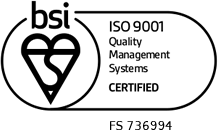Piezoelectric Materials LIMM Analyser
Fast, accurate and highly sensitive
Introducing a new LIMM depth profiling metrology tool
To assess the pyroelectric performance of ferroelectric materials, The Laser Intensity Modulation Method (LIMM) is a non-contact, depth profiling metrology tool for piezo-films providing industry leading quality assurance and control to accelerate the commercialization of novel haptic based devices.
LIMM periodically heats a piezo material creating a tiny oscillatory current, proportional to the piezoelectric coefficient however until now the speed, accuracy and depth-sensing resolution was limited to only a few hundred micrometres and 3D imaging was not possible.
This prototype developed in collaboration with Innovate UK, the UK’s national innovations agency and wider industry experts addresses these fundamental issues.
A non-contact, depth profiling metrology tool for piezo-films providing industry leading quality assurance and control to accelerate the commercialization of novel haptic based devices.

Who will benefit from this technology?
Ultra-thin piezo films are an integral element of high-frequency electronics, active surfaces for soft robotics, haptic surfaces and other touch screen technologies. They drive down operating voltages and importantly power requirements, increase performance, sensitivity and provide smart feedback.
To benefit from the new range of materials and designs required for haptic, transducers and electronic transistors used for example in sonar technology, a depth-sensing measurement of at least 3 orders of magnitude to facilitate 10-100 nm resolution is needed to assess material performance and to image the effects of electrodes, space-charge layers, trapped sites at the electrode interface which dominate performance at these scales.
Coupled Analysis
Ultra-thin piezo films are an integral element of high-frequency electronics, active surfaces for soft robotics, haptic surfaces and other touch screen technologies. They drive down operating voltages and importantly power requirements, increase performance, sensitivity and provide smart feedback.

A thermal source locally heats the sample. The dynamics of that heat pulse probes deeper or shallower, permitting a 3D volumetric interrogation of the pyroelectric materials’ activity.

Heating

Constant, p

Rectangular, p

Ps=Q.dT/dt
2D finite element simulation (COMSOL V6) shows the heat pulse interacting with the sample. The subsequent simulations reveal how the heat pulse creates a pyroelectric signal from a variety of ‘samples’.

A 2D map and 3D volume inspection can be carried out by rastering the laser or other heat source or by translating the sample. Electrosciences has developed both methods in their realisation of this novel tool.
Results

A tiny flaw (a pore) hidden in the depths of a solid state gyroscope ceramic element impacts its performance such as sensitivity and accuracy. (All images from collaborative work with Mark Stewart, NPL)

A piezoelectric multilayer actuator imaged using this method highlights delamination of the piezo ceramic electrode with the external interdigitated electrodes, reducing overall actuation efficiency and stroke.


’13’ composites contain long piezo fibres embedded in a polymer matrix and these are used for medical and other sonar based applications. Here, we see two images, taken of the same sample at different excitation frequencies, that has the effect of imaging different depths in the material. We can observe some of the piezo rods or fibres being lost at greater depths indicating fracture or other damage. This composite would not work as an efficient sonar device.


’13’ composites contain long piezo fibres embedded in a polymer matrix and these are used for medical and other sonar based applications. Here, we see two images, taken of the same sample at different excitation frequencies, that has the effect of imaging different depths in the material. We can observe some of the piezo rods or fibres being lost at greater depths indicating fracture or other damage. This composite would not work as an efficient sonar device.




